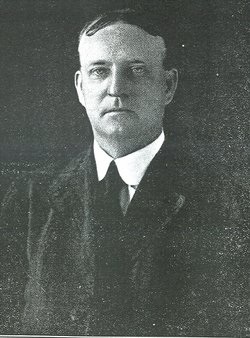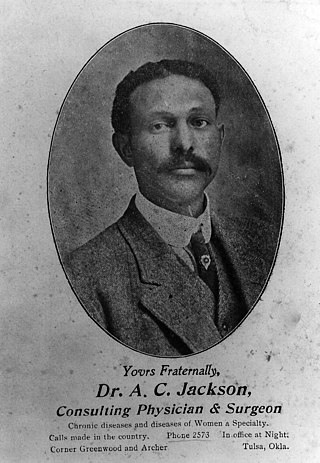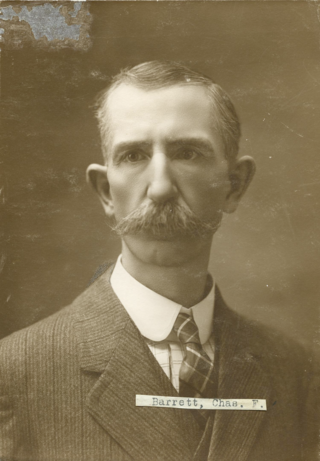Related Research Articles
In the broader context of racism in the United States, mass racial violence in the United States consists of ethnic conflicts and race riots, along with such events as:

The Tulsa race massacre, also known as the Tulsa race riot or the Black Wall Street massacre, was a two-day-long white supremacist terrorist massacre that took place between May 31 and June 1, 1921, when mobs of white residents, some of whom had been appointed as deputies and armed by city government officials, attacked black residents and destroyed homes and businesses of the Greenwood District in Tulsa, Oklahoma. The event is considered one of the worst incidents of racial violence in American history. The attackers burned and destroyed more than 35 square blocks of the neighborhood—at the time one of the wealthiest black communities in the United States, colloquially known as "Black Wall Street".

Muskogee is the 13th-largest city in Oklahoma and is the county seat of Muskogee County. Home to Bacone College, it lies approximately 48 miles (77 km) southeast of Tulsa. The population of the city was 36,878 as of the 2020 census, a 6.0% decrease from 39,223 in 2010.
Greenwood is a historic freedom colony in Tulsa, Oklahoma. As one of the most prominent concentrations of African-American businesses in the United States during the early 20th century, it was popularly known as America's "Black Wall Street". It was burned to the ground in the Tulsa race massacre of 1921, in which a local white mob gathered and attacked the area. Between 75 and 300 Americans were killed, hundreds more were injured, and the homes of 5000 were destroyed, leaving them homeless. The massacre was one of the largest in the history of U.S. race relations, destroying the once-thriving Greenwood community.
Charles William Kerr was an American Presbyterian minister from Pennsylvania who served as pastor of First Presbyterian Church in Tulsa, Oklahoma from 1900 to 1941. Kerr was the first permanent Protestant Christian pastor to serve in Tulsa. He led the church through dramatic growth and change resulting from the discovery of oil in this area.

The Tulsa World is an American daily newspaper. It serves the city of Tulsa, Oklahoma, and is the primary newspaper for the northeastern and eastern portions of Oklahoma. The printed edition is the second-most circulated newspaper in the state, after The Oklahoman.
Roy Belton was a 19-year-old white man arrested in Tulsa, Oklahoma with a female accomplice for the August 21, 1920 hijacking and shooting of a white man, local taxi driver Homer Nida. He was taken from the county jail by a group of armed men, after a confrontation with the sheriff, and taken to an isolated area where he was lynched.
Dick Rowland or Roland was an African American teenage shoeshiner whose arrest for assault in May 1921 was the impetus for the Tulsa race massacre. Rowland was 19 years old at the time. The alleged victim of the assault was a white 17-year-old elevator operator Sarah Page. She had declined to advocate for and/or assist any prosecution. According to conflicting reports, the arrest was prompted after Rowland tripped in Page's elevator on his way to a segregated bathroom, and a white store clerk reported the incident as an "assault" or a rape.

Wyatt Tate Brady was an American merchant, politician, former Ku Klux Klan member, and a founder of Tulsa, Oklahoma.

Richard Lloyd Jones was an American journalist who was the long-time editor and publisher of the now defunct Tulsa Tribune. He was noted for his controversial positions on political issues. The son of a notable Unitarian missionary, Jenkin Lloyd Jones, he was a co-founder of All Souls Unitarian Universalist Church in Tulsa, Oklahoma.
Quraysh Ali Lansana is an American poet, book editor, civil rights historian, and professor. He has authored 20 books in poetry, nonfiction and children’s literature. In 2022, he was a Tulsa Artist Fellow and Director of the Center for Truth, Racial Healing & Transformation at Oklahoma State University-Tulsa, where he was also Lecturer in Africana Studies and English. Lansana is also credited as creator and executive producer of "Focus: Black Oklahoma," a monthly radio program on the public radio station KOSU.
The Oklahoma Eagle is a Tulsa-based Black-owned newspaper published by James O. Goodwin. Established in 1922, it has been called the voice of Black Tulsa and is a successor to the Tulsa Star newspaper, which burned in the 1921 Tulsa race massacre. The Oklahoma Eagle publishes news about the Black community and reported on the 1921 Tulsa race massacre at a time when many white-owned newspapers in Tulsa refused to acknowledge it. TheOklahoma Eagle is also Oklahoma's longest-running Black-owned newspaper. The Oklahoma Eagle serves a print subscriber base throughout six Northeastern Oklahoma counties, statewide, in 36 U.S. states and territories, and abroad. It claims that it is the tenth oldest Black-owned newspaper in the United States still publishing today.

A.C. Jackson was an African American surgeon who was murdered during the Tulsa race massacre in 1921 and is known as the most prominent victim of the massacre. Jackson was a leading member of the Oklahoma medical community and the African-American community in Tulsa, Oklahoma until his death.

African Americans in Oklahoma or Black Oklahomans are residents of the state of Oklahoma who are of African American ancestry. African Americans have a rich history in Oklahoma. An estimated 7.8% of Oklahomans are Black.
Minor league baseball teams were based in Muskogee, Oklahoma in various seasons between 1905 and 1957. The final team, the Muskogee Giants, played as members of the Western Association (1951–1954) and the Sooner State League (1955–1957). Earlier Muskogee teams played as members of the Missouri Valley League (1905), South Central League (1906), Oklahoma-Arkansas-Kansas League (1907–1908), Western Association (1909–1911), Oklahoma State League (1912), Western Association, Southwestern League (1921–1923), Western Association (1924–1932), Western League (1933), Western Association and Sooner State League (1955–1957). Muskogee never captured a league championship, making league finals on multiple occasions.
William Henry Twine was an American lawyer and newspaper publisher in Oklahoma.

Buck Colbert Franklin was an African American lawyer best known for defending survivors of the 1921 Tulsa race massacre.
Frank Hilton Greer was an American journalist, Sooner, and politician from the U.S. state of Oklahoma who founded the Daily State Capitol newspaper and served in the Oklahoma Territorial Legislature between 1892 and 1894.

Charles F. Barrett was an American journalist, soldier, and politician from the U.S. state of Oklahoma who served as the 4th and 6th Adjutant General of Oklahoma between 1919-1923 and 1925–1939. He led National Guard response to the Tulsa race massacre.
References
- ↑ Danky, James Philip; Hady, Maureen E. (1998). African-American newspapers and periodicals : a national bibliography. Mark Graham. Cambridge, Mass. : Harvard University Press. p. 571. ISBN 978-0-674-00788-8.
- 1 2 Parshina-Kottas, Yuliya (2021-05-24). "What the Tulsa Race Massacre Destroyed". The New York Times. ISSN 0362-4331 . Retrieved 2022-04-15.
- ↑ "A. J. Smitherman, News Journalist born". African American Registry. Retrieved October 15, 2022.
- 1 2 3 4 5 6 7 8 Spencer, Mark (February 6, 2021). "A.J. Smitherman: A crusading editor pays a heavy price". The Philadelphia Tribune . Retrieved April 15, 2022.
- 1 2 "Tulsa Star". gateway.okhistory.org. Oklahoma Historical Society. Retrieved 5 August 2022.
- 1 2 3 "Smitherman, Andrew J. | The Encyclopedia of Oklahoma History and Culture". www.okhistory.org.
- 1 2 "Andrew J. Smitherman (1883-1961) •". 2009-05-09. Retrieved 2022-04-20.
- ↑ "A New York professor and Tulsa DA helped clear records of Black men accused of wrongdoing in Race Massacre". ABC 17 KMIZ. June 2, 2021.
- ↑ Kirst, Sean (18 June 2020). "In Buffalo, a hero journalist found new life after Tulsa massacre". Buffalo News.
- ↑ "A.J. Smitherman". okjournalismhalloffame.com. University of Central Oklahoma. Retrieved 5 August 2022.